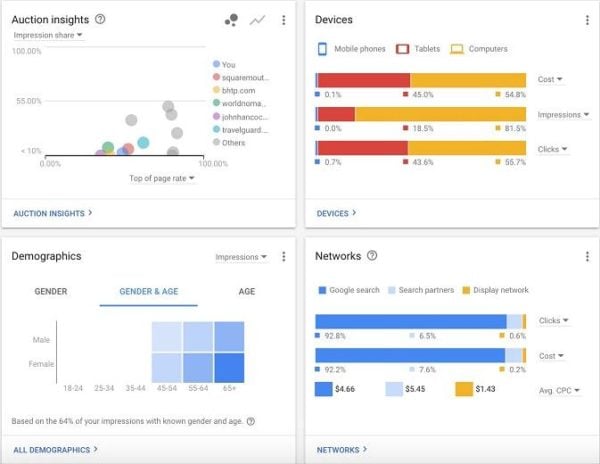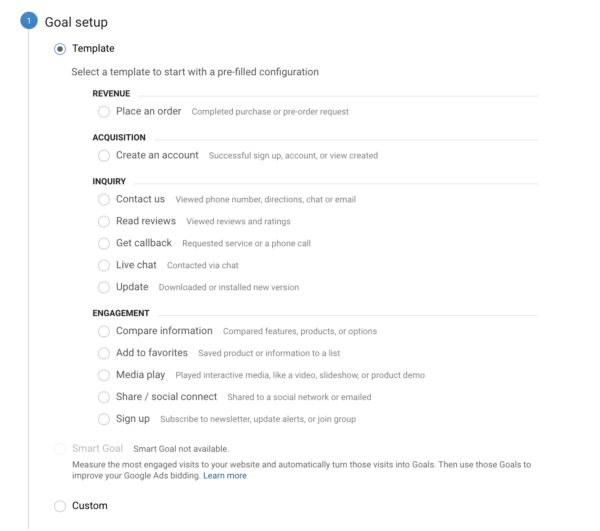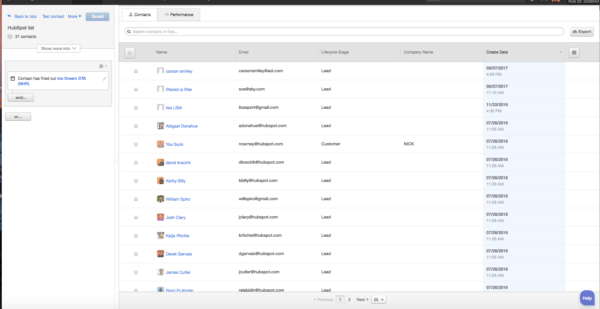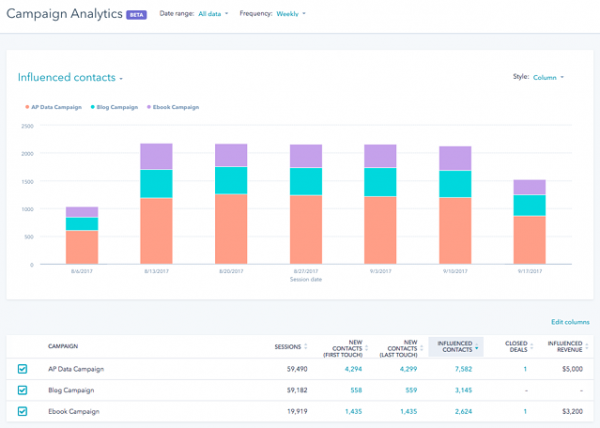
AdWords is a great driver campaign for many B2B businesses who want to see new lead acquisition and scale quickly. Some B2B companies run an AdWords campaign strategically while their organic marketing strategy is taking root. Simply stated, AdWords (Google Ads) can be an accelerator for search visibility.

Other companies inherit AdWords campaigns or run paid media arbitrarily without a clear focus on key performance indicators. Many B2B companies can benefit from assessing their AdWords spend and impact as long as they match their keyword strategy specifically to the needs of their ideal customer profile--rather than general visibility for broad search trends.
First, you need to set some goalposts. What are your success metrics for AdWords and paid search? If you want to use AdWords to drive new lead acquisitions or nurture existing leads in a re-marketing campaign, your KPIs are clear-cut:
The first three of these metrics are all available in the Google AdWords analytics panel. The fourth, qualified leads, would require a separate tool, such as HubSpot or Pardot. However to see the right data in AdWords you will need to ensure that your conversion goals are set up properly in your settings for Ads and Analytics.

By focusing on these true performance metrics above others, you create a focus of mission and get to the heart of ROI from search marketing.
Tip: For best results create a dedicated landing page with a form, and a corresponding "thank you" page for your campaign. Your conversion goal is on the "thank you" page, and this is critical for measuring a conversion. If you do not have this tracking set up you cannot gather data retroactively and should set up goal tracking immediately.
One other KPI that businesses often overlook when assessing the success of any paid campaign is the quality of the leads they drive. Quantity and scale are only relevant if leads are first qualified. You will need to track leads that come into your funnel according to their original source campaign. You can do this with custom tracking UTM parameters, or automatically with a CRM like HubSpot by setting up qualifying questions for lead assessment and “smart lists” that automatically add new leads.

Then take note of these factors:
The quality of leads can be objective or subjective based on how you have set up your criteria -- whether you automate the process or if you manually qualify and reach out to new leads.
The businesses that see the most success from their campaigns run tests and optimize gradually based on data insights. They look at their best ads, keyword targets and campaigns and do more like it while pausing less successful variations. This is called lean campaign monitoring.

Here are some general truisms about a successful AdWords campaign when you refine over time:
Naturally, you learn things about your audience if you're paying attention. By continually optimizing your campaigns based on the best ads, keywords, and content offers, you lower your cost per conversion gradually.
If the cost per conversion stagnates or even rises in an ongoing trend line, you are not successful -- unless you are in a heavy testing period. But you can quickly turn the tides by running lean tests and letting the data inform your spend.
Tip: Keep in mind there is a cap for how low your CPA can be, and once you hit that threshold, you have established a true cost per lead. Your next step is to scale with more spend and more campaigns.
When running a hands-on AdWords campaign you will start to notice valuable insights, such as:
It’s wise to act on these insights and alter your campaigns according to high-performers. If you do so, you will naturally see more conversions come into your funnel. By writing ads in accordance with high quality scores and relevant keywords, you can grow your ads’ visibility and impressions, which means more conversions for your business.
However, some businesses are limited by impressions. In industries that are fairly new or niche, there may not be enough demand in search engines to facilitate lead generation. See below for some next steps.
Sometimes the best thing you can learn from AdWords is that AdWords does not work for your business. As mentioned before, this is often the case with businesses that are innovators in a space where potential customers haven’t yet identified a need or a vernacular for your service. AdWords works best for an established market--rather than a newly emerging market where terminology is yet to be codified. But you cannot come to this conclusion until you’ve put ample budget and time into running a series of tests.
In other words, you need to confirm that search engines are not where your leads are lurking, and rule out that your ad copy, keyword targets, and content offers are not impactful. In this case, you can run campaigns on other demand generation channels like LinkedIn or Twitter for testing and scale.
Conversely, if you see success with the two success trends above, consider scaling up. At your current cost per lead, how many leads can you gain if you input another $1000, $5000 or more? Does scaling make sense with your lead goals and budget constraints? You can use AdWords as a long-term lead generation channel and a valuable supplement to other lead generation activities.
Clearly, AdWords can be an impactful channel for both B2C and B2B. But AdWords (Google Ads) campaigns require consistent monitoring, testing, and lean campaign management. By following important conversion KPIs closely, you can quickly realize your next step for AdWords.
by Jonathan Franchell, CEO of Ironpaper - For more tips and hacks: Need to remove a new line after h1 tags? Both web designers and SEO practitioners need to employ headline tags: H1, H2, H3 in several ways to improve web page structure and tag...

The marketing industry is transforming significantly due to generative AI and increasing market complexity. Gartner's prediction of a 25% decline in traditional search traffic suggests that the era of search engines is dying. AI tools, particularly...

The Crowded Arena of the IT Marketplace Updated December 2024 The Information Technology (IT) landscape is experiencing rapid growth and intensifying competition. IT spending is projected to reach nearly 5.1 trillion U.S. dollars in 2024, a...

Updated December, 2024 The field of digital marketing is evolving rapidly in response to new technology and changing buyer expectations. To help career-minded marketers, we’ve rounded up the top 10 skills needed to succeed in the field. These are...
